The right of access to information continues to be severely restricted in Indian occupied Kashmir (IoK), as part of the Narendra Modi government’s policy of projecting the so-called normality narrative. These restrictions have severely undermined the media’s role and its ability to report facts on the ground, especially after the territory was subjected to a communication and information blockade by the Indian government on August 5, 2019.
In addition to the government’s control of the communication process, the curbs on media such as surveillance, investigation, harassment, intimidation, restrictions on movement of journalists, restrictions on news-gathering and denial of the right to access to information have not only affected objective journalism and the effective reporting of human rights violations but also caused massive losses to economic activities, healthcare and education of the people of Kashmir. The restrictions have prevented the voices of Kashmiris from reaching the international community.
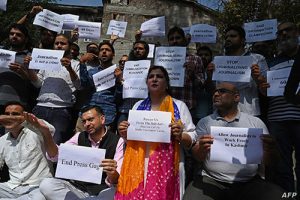
Caught in the crosshairs of the conflict, the Kashmiri journalist community and media organisations have faced some of the most daunting existential challenges, yet they are standing their ground and persisting in efforts to keep the world abreast of the happenings taking place in the disputed territory.
Working under extremely unfavourable conditions, the journalist fraternity toiled hard to bring to the fore brutalities inflicted on the people of Jammu and Kashmir (J&K) by the Indian armed forces. In addition to exposing the massive human rights violations, journalists risked their lives in the process of reporting from the ground, which belied the Indian government’s propaganda and misrepresentation of Kashmir by both the “hyper-nationalists” and “liberal press” of India.
Journalism Under Attack
Practicing journalism in Kashmir has never been an easy job. During the years of turmoil in the region, at least 19 journalists, including a senior journalist and editor of the Rising Kashmir, Dr. Shujaat Bukhari, lost their lives while performing their professional duties. A number of journalists including publishers and newspaper owners had to face arbitrary arrests and detentions under black laws such as the Public Safety Act (PSA) and the Unlawful Activities Prevention Act (UAPA). Offices of prominent newspapers and residences of senior journalists were raided by India’s National Investigation Agency (NIA). Two media outlets, including the oldest English Daily of the region, Kashmir Times, were sealed. Anuradha Bhasin, the Executive Editor of the Kashmir Times, while talking to Al Jazeera said, “This was simply done to punish us for speaking the truth.”
The arrest of senior journalists and raids on newspaper offices speaks volumes about how the authorities in J&K enjoyed a free hand in intimidating and coercing the press to toe a particular line.
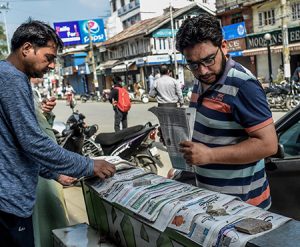
Draconian Blackout & Communication Blockade
India’s post August 5, 2019 blackout and communication blockade rendered the local media in Kashmir dysfunctional, as news gathering became a major casualty during the crippling blockade. The entire territory of Jammu & Kashmir was turned into an information black hole for the rest of the world. The communication blockade, affecting mobile telephony, Internet and telephone landlines, overwhelmingly prevented the media from reporting the ground situation and filing news stories. “Journalists continue to face severe restrictions in all the processes of news-gathering, verification and dissemination, the free flow of information has been blocked, leaving in its wake a troubled silence that bodes ill for freedom of expression and media freedom.” In the aftermath of the abrogation of Article 370, newspaper publication was halted for many months and journalists faced reprisals and mass arrests for filing stories on Kashmir’s clampdown.
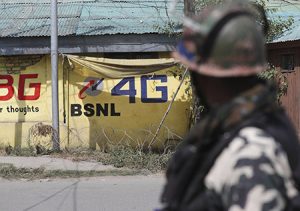
Ban on Newspaper Publication
In a sweeping information blackout, the occupation authorities in the valley had shut down printing presses and banned newspapers from printing or uploading news on the internet. Even after the passage of five months, major newspapers in the valley were unable to operate freely due to the continued communication blockade.
Restrictions on Free Media
Major newspapers were deprived of the editorial voice. Instead of debating the most pressing issues, they could only write on soft subjects, such as a passage from Franz Kafka’s Metamorphosis, etc. Prominent writers and regular columnists who have written consistently on the Kashmir issue were completely silenced. Reporters’ movements were severely curtailed and their ability to take photos and videos restricted. Photographers/journalists’ ID cards and license plates, cameras and phones were confiscated. Journalists were denied access to the news wires or social media. Indian officials have consistently denied reporters the opportunity to report on unrest in Kashmir, forcing them to rely on state issued press briefs, without the means to verify stories.
Reprisals on Filing Stories
Besides physical assault, journalists in 2019 faced reprisals for filing stories on state sponsored violence, human rights violations and mass arrests of Kashmiri youth. Gowhar Geelani, Bilal Bashir Bhat, Haziq Qadri, Irfan Malik, Peerzada Ashiq, Azaan Javaid and Anees Zargar, Qazi Shibli, editor of Kashmiriyat, Masrat Zahra, Fahad Shah and others are amongst the prominent Kashmiri journalists and authors who faced reprisals, arrests, torture and harassment at the hands of Indian authorities for reporting on the human rights situation in the region.
Indian mainstream media & Kashmir
Ideally, the media’s role is to provide conflict coverage that could attract serious concern from the international community. But in the case of Kashmir, the world seems to be influenced by India’s corporate media that instead of reporting truth is usually seen toeing the government line to seek benefits. The Indian government spends a huge chunk of its budget on media to seek favourable coverage and editorial influence, and create a cobweb of confusion around Kashmir. Over the years, we have seen how media in India was transformed and turned into a propaganda machine that continued to feed fake news to its readers 24/7 and spread lies in sharp contrast to reality. The dangerous role assumed by the media in cahoots with the Indian establishment was meant to deconstruct and demolish the dominant Azadi narrative within the precincts of the Kashmir Valley and beyond.
Restrictions on Internet & Social Media
In the year 2019, 55 instances of Internet blockade were recorded. However, the longest Internet shutdown of the year was enforced on August 5, 2019 when the Indian government revoked Kashmir’s autonomy. The frequency of Internet shutdowns in Kashmir particularly increased in July 2016. In the last three years (2017 to 2019), the Kashmir valley witnessed at least 205 Internet shutdowns from time to time.
Mechanics of Silencing Dissent
A careful comparison of the media’s coverage of the Kashmir issue before and after August 5, 2019 speaks volumes about the level of pressure and censorship the local press has undergone during the past couple of years.
The censorship on one hand brought the media on its knees while on the other it has led to the total absence of media coverage of activities of civil society groups as well as the incidents of violence and human rights violations taking place in the region.
Institutional censorship in the form of the Media Policy has overwhelmingly incapacitated the media from giving objective coverage to the Kashmir issue. Under the pretext of this policy, newspapers in Kashmir were stopped from publishing opinion pieces and op-eds on the simmering situation in the region. The ban has led to a sharp decline in the ratio of news highlighting the abysmal human rights situation in the region in the past two years. There is no space for political dissent.
Earlier, local media would hardly miss any stories, which would give perspective to people as well as journalists in national and international publications. But now this kind of inclusive reporting of events is no more seen in the local press, says Shafat Farooq who works with the BBC in J&K. “I have been reporting in Kashmir since 2002 and we have done some bold stories that were critical of the authorities. Obviously, harassment of journalists has always been there, but what we are facing since August 5 last year is unprecedented,” says senior journalist Ishfaq Tantray, who is also the general secretary of the Kashmir Press Club (KPC).
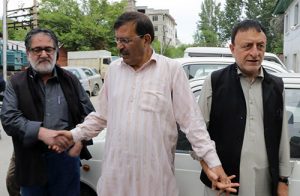
International Response
The communication blockade and restrictions of social and mainstream media in Kashmir by the Indian government have drawn severe criticism from the international community. Besides influential world governments, eminent rights activists from across the globe criticised India’s digital authoritarianism to suppress the media and voices of dissent in the restive region. The UN Commissioner for Human Rights Ms. Michelle Bachelet, US lawmakers and several other countries including Pakistan, China, Turkey, and Malaysia called for an end to the communications blockade.
Amnesty International started an online petition titled ‘Let Kashmir Speak,’ which demanded a lifting of “the blackout of communications in Jammu and Kashmir” while “letting the voices of the people of Kashmir be heard” and allowing “unconditional and unconstrained access to news and information from the valley.”
The United Nations’ nine special rapporteurs in a joint communication to the Government of India wrote, “There’s something about this shutdown that is draconian in a way other shutdowns usually are not,” and categorically declared it “a collective punishment to the people of the held territory.”
UN Secretary-General Antonio Guterres has also raised concern over the new limitations placed on Kashmir, adding that the latest events “could exacerbate the human rights situation in the region.”
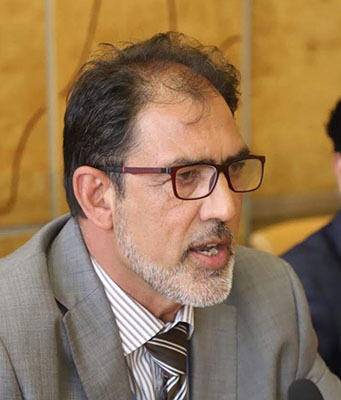
The writer is Chairman, Kashmir Institute of International Relations (KIIR), Islamabad. He is a member of the All Parties Hurriyat Conference, AJK chapter.



